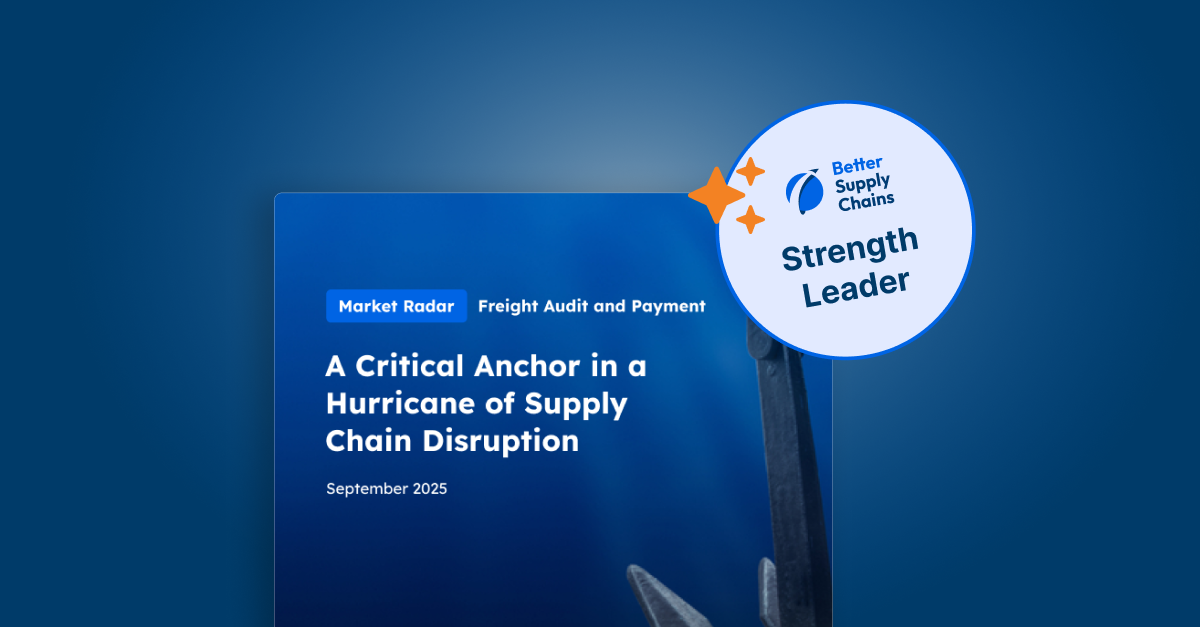Avoiding Common Pitfalls in Freight Audit That Affect Your Bottom Line

If you run a shipping and logistics operation, you know that details matter and efficiency is key. But picture a scenario where one day you wake up to find out that in every batch of 100 shipments, you have eight hemorrhaging money due to unnoticed billing mistakes. It's here where the critical yet often overlooked role of freight auditing comes into play, providing an in-depth review of your shipping documents and guaranteeing that every charge and detail is accurate.
The freight audit process is almost like finding a stack of money you didn't know you were losing by zeroing in on billing mistakes that quietly chip away at your profits. Consider it as digging through each charge on your shipping documents with a fine-tooth comb to genuinely protect your company's bottom line and streamline how things get done. Yet, beyond avoiding double charges, it's about making every part of your operations smoother, keeping your relationships with partners strong and healthy, and steering your business clear of hidden financial traps for a future filled with growth and stability.
Identifying and Overcoming Common Pitfalls
The world of shipping and logistics is cutthroat, and every penny counts. However, staying vigilant in freight auditing can protect and even boost your bottom line. The first step is to recognize common pitfalls in the process.
Leveraging Technology to Avoid Duplicate Payments
One of the trickiest areas in freight auditing is not paying for the same invoice more than once. With numerous invoices flooding in, it's easy for duplicates to slip through the cracks. Here's where technology becomes your best ally. By automating invoice verification, you can precisely match each freight invoice against its corresponding shipping documentation, like bills of lading or delivery receipts. At the same time, this automation extends to scrutinizing accessorial charges, complying with tariffs, and making sure every fee you pay is legitimate and agreed upon.
The true magic happens in preventing those pesky duplicate payments. Modern systems cross-check invoice numbers and implement thorough checks to catch redundancy before it hits your accounts payable. Beyond saving money, it streamlines your entire billing process, making it faster, more accurate, and more transparent. Think about it – no more sifting through piles of paperwork or second-guessing if you paid an invoice. With automation, what used to cost businesses $5 to $12 per manual invoice process now becomes significantly more efficient and error-free.
Keeping Up with Freight Rates and Surcharges Through Software
As markets fluctuate, so do freight rates and their associated surcharges. Staying ahead means leveraging technology to get real-time updates and guarantee you're always paying the right amount. Software solutions like Transportation Management Systems (TMS) and Electronic Logging Devices (ELD) transform how you manage freight, from checking rates to tracking shipments. These tools don't just keep you updated; they optimize your logistical processes, enabling better resource allocation and more proactive decision-making.
Strategic Approaches to Freight Audit
A sharp eye on your freight audit can make the difference between profit and loss, yet it requires a blend of sharp strategy and intelligent tools. It’s about building a process that not only catches mistakes before they cost you but also streamlines operations to keep your supply chain moving smoothly.
Automation and Software Solutions
Imagine a world where freight invoices check themselves, discrepancies light up like neon signs, and every charge aligns perfectly with your contracts. Here, automation and specialized software once again come to the rescue. By automatically validating invoices against your shipping data and contracts, these tools cut out the tedious manual checks, guaranteeing everything from rates to discounts is spot-on.
Errors in billing? Advanced algorithms are on the hunt, ready to spot anything amiss. And if there's a hiccup, the software points it out, helps you manage the exception, and smooths out disputes with carriers. The bonus? A wealth of reports and insights at your fingertips, offering a clear view of where your money's going and how your carriers are performing. With businesses often overpaying by 7% to 10% due to billing errors, this isn't just convenient; it's cost-saving, trimming down manual labor by over 55% and slicing through the hefty costs tied to traditional invoice processing.
Effective Carrier Negotiations and Relationships
Now, let’s talk about getting those rates down. Beyond technology, the human element of regular communication and negotiation with carriers plays a pivotal role. They're opportunities to secure deals that favor your bottom line, build a rapport, and prove yourself as a reliable partner. When you show your value, carriers will see you as someone who deserves the best rates thanks to your prompt payments and accurate forecasts.
Yet, this relationship-building goes beyond good vibes; it makes you a preferred shipper that carriers want to keep happy. The result? Improved operational efficiency and a stronger position in a competitive market. Remember, freight rates can chew up 58% of logistics costs, so negotiating better terms can significantly boost your profitability.
Leveraging Data for Freight Audit Efficiency
In your freight audit, every number tells a different story. Data analytics and performance metrics are the engines that make this process go from detecting billing inaccuracies to uncovering hidden cost-saving gems.
Key Performance Indicators (KPIs) to Watch
Monitoring the right Key Performance Indicators (KPIs) is integral for assessing the effectiveness of your freight audit process. Below are five essential ones you should keep track of:
- Invoice Accuracy: A critical measure, this KPI tracks the ratio of accurate invoices, aiming for a goal of 95% accuracy or higher. It directly indicates how well you're managing the freight audit process.
- Cycle Time: This KPI gauges the average duration from invoice receipt to payment, with a shorter cycle time signifying a more streamlined process. It reflects the operational efficiency of your audit system.
- Cost Savings: Calculated through various methods, this KPI highlights the financial impact of the freight audit by showing the money saved from overpayments, duplicate payments, and other discrepancies.
- Discrepancy Rate: By showing the percentage of invoices with errors, this KPI helps identify the effectiveness of the audit process. A lower rate indicates a more accurate and reliable system, with studies showing an average discrepancy rate of 12%.
- Recovery Rate: This KPI reveals the success rate of reclaiming lost funds, with higher percentages showcasing more effective recovery efforts. Reports suggest that a well-implemented freight audit can reduce freight spending by 6%, with spend analytics potentially saving up to 18%.
The Role of Analytics in Identifying Savings
Imagine using anomaly detection and predictive analytics to sift through carrier performance data, like detectives piecing together clues to solve a mystery. These tools do more than crunch numbers and reveal patterns and trends that can help you proactively boost satisfaction and streamline operations. Anomaly detection, in particular, excels at identifying unexpected opportunities for savings and preventing costly maintenance issues, keeping your supply chain running smoothly.
With 93% of executives recognizing the critical role of data strategy for leveraging AI and a similar percentage of industrial manufacturers integrating these advanced technologies, it’s clear that adopting these methods is a strategic priority. After all, employing predictive analytics and anomaly detection helps companies find ways to improve efficiency and potentially reduce indirect costs by up to 20%.
Best Practices for a Future-Proof Freight Audit Process
Finally, stepping up your freight audit game is about future-proofing your logistics in a world where technology and market trends move at lightning speed. Consider some of the following talking points as best practices.
Integrating Freight Audit with Business Systems
Picture your freight audit not just as a task but as a powerhouse of efficiency, all thanks to seamless integration with ERP and TMS systems. This fusion places your operations under a microscope, offering crystal-clear data and analytics. Suddenly, you're spotting billing mistakes, sidestepping unnecessary costs like a pro, and turning a potentially clunky relationship into a well-oiled machine.
Operational efficiency? Check. Route planning and carrier selection become as smooth as silk. And the cherry on top? A quicker return on investment and tangible cost savings, with ERP helping slash inventory costs by an impressive 11% on average. As we look ahead, with $183 billion poised for ERP software spending, it’s relatively evident that integrating these systems is necessary for staying ahead.
Compliance and Sustainability
Finally, freight audits go beyond dotting the i's and crossing the t's on freight bills to serve as a roadmap through the complex terrain of logistics. By diving deep into the details of each bill, from how heavy a shipment was to how far it traveled, these audits ensure every penny spent is a penny owed. This meticulous attention to detail keeps your business in line with the rules, avoiding costly slip-ups.
Moreover, as the logistics world turns a sharper focus on our planet, freight audits lead the charge toward a greener future. After all, 30% of companies in the freight audit world are innovating with eco-friendly packaging, and the streets could see a 20% jump in logistics companies going electric by 2025.
Final Words: Build Your Financial Integrity with Intelligent Audit
Keeping a keen eye on freight audit practices is more than just a routine check—it's the key to unlocking hidden savings and sidestepping costly mistakes. A dedicated audit approach is a wise move in a world where overlooked inefficiencies and data mishaps can lead to significant financial drains. It's about flipping the script on the common errors that eat into your profits while building resilience for the long term. That’s why choosing the right partner is so important.
As a leading industry expert, Intelligent Audit has been changing the game for 27 years, with over $1 billion in shipments audited in just 2023. Catering to a diverse clientele, including 20% of Fortune 50 companies, it rolls out a tailored set of services designed for Shippers, 3PLs, and LSPs of all shapes and sizes. From in-depth Freight Audits and Recovery to cutting-edge Business Intelligence and Analytics, the mission is clear: to boost ROI and streamline operations like never before. With a vast network of global carrier integrations and top-tier technology, Intelligent Audit is all about making shipping smoother and more efficient.
Thinking about taking your freight audit to the next level? Get started with Intelligent Audit—where precision meets progress.



